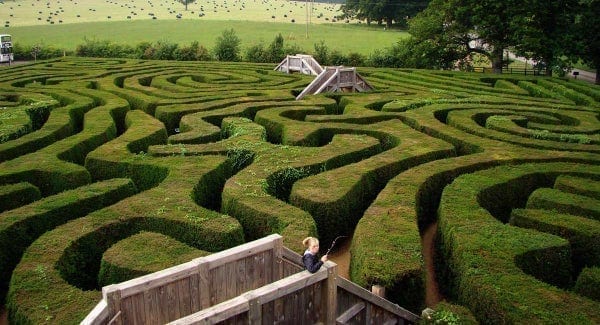As participants go through the maze, they will learn important concepts about choices and consequences. They will learn the importance of learning from their mistakes and the mistakes of others, and using positive support systems to help them through life’s experiences.

This activity can also apply to “Climbing Out,” “Desire, Time, and Effort,” and “Plugging In.”
- Spatial Requirements: Gym/outdoor space required
- Activity Type: Movement/group
- Grades: 2-12
- Group Size: 10-15 per maze
- Time: 30-40 minutes
Materials:
- 1 roll of masking tape
- 1 grid map per team (These can be found at www.whytry.org/activities.)
Activity:
Make a 6 X 9 grid on the floor with the masking tape. A “maze master” stands at the head of each maze to monitor the movement of the team members on the maze. The maze master holds the grid map out of sight of the group. He/she also makes a “beep” sound when a mistake is made, and keeps track of all mistakes with a tally mark on the paper.
Have the team members line up in front of the maze. The team will see a grid of squares made of masking tape, and only the maze master will know which squares represent the path and which ones are impassable. (The impassable squares are those with an “X” over them on the map.)
The first person in line begins by stepping on any square of the maze. If they are lucky enough to step on the path, they may proceed to another square. They may move forward, backward, sideways, and diagonally, but can never skip or step over squares. As long as they stay on the path as shown on the grid map, nothing happens. But when they step off the invisible path and onto an invisible “X,” the maze master “beeps” and that person leaves the maze and proceeds carefully back through the maze, to the entry point, and on to the back of the line. (They must avoid “beeping squares” while they are retreating as well.) The next person in line then steps into the grid and also moves through it until they make a mistake and the maze master “beeps” at them. The other players must watch closely to learn the correct route and complete the object of the game, which is for everyone to finish the maze without stepping on an impassable, “beeping” square.
Time this event starting with the first person. Any time the maze master beeps, add one minute to the total time. This includes if a team member steps on an impassable square while retreating back to the starting point.
Allow each player to take a turn before allowing second turns. Do not allow props (like a pen and paper) or speaking.
Only one person may be on the maze at a time until a player has made it completely through the maze and the pattern is discovered. At this point, there may now be multiple players on the maze at one time. However, if any of those players make a mistake, all the players behind them must retreat back to the start. As before, each beep encountered while retreating adds a minute to the team’s total time.
Processing the Experience:
- What was difficult about this activity?
- What were your feelings as you went through this activity? What frustrated you? What motivated you?
- What tools helped you to be successful in the activity?
- What could the “Maze” represent in your life? (the path of life)
- What might the “beeps” represent? (the mistakes we make on the path of life)
- What “beeps” do you have in life?
- What support systems did you have in the activity?
- What support systems do you have in life?
- Do you use all of the support systems that are available to you? Why or why not? (This question also ties in to “Plugging In.”)
- Were you concerned about the success of the other players as they entered the maze? Why or why not?
- How concerned are you with the success of others in the maze of life?
- Do we ever allow friends to keep making the same mistakes over and over again? (This question also ties in to “Climbing Out.”)